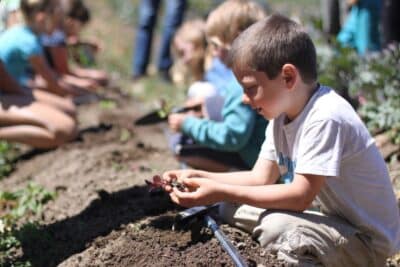Sustainable Farming
The 150 acres of land on Live Earth Farm, and the 1.2 acre of garden stewarded by Farm Discovery, encompass a biodiverse ecological landscape with over 50 rotational crops and habitat plantings that help maintain pollinator activity while also sequestering carbon – equipping the soil and land to withstand flooding, erosion, etc., As an education organization, we view environmental stewardship as a central component to empowering the next generation to be conscious consumers for their personal health and the health of their communities. Using the ecological justice framework, we implement strategies that improve and restore the balance between our community and healthy ecological and agricultural systems. Through our programs, we provide equitable access to farming, outdoor education, and nutrition education for our community, while operating regenerative agricultural practices that go beyond the traditional organic farming requirements. Our goal is to restore a lost connection between individuals, their food system, and the local bionetwork.
Farm Discovery Practices
Through on farm projects and community-based collaboration, Farm Discovery advocates for regenerative farming that supports biodiversity, conserves water, improves water quality, sequesters carbon, and is socially just. Farm Discovery is upstream of the Pajaro River, America’s most endangered river by the American Rivers organization, due in part to severe agricultural runoff. Farm Discovery’s regenerative, organic field requires less irrigation because soil high in organic matter holds water better. The improved soil health of the regenerative plot will further serve to increase biodiversity in the soil, which supports biodiversity throughout the food chain of this ecosystem. As with the improved soil health increasing biodiversity, so does native planting. Native plants provide food, forage and cover for native insects, bees, and animals throughout the food chain. Native plants also tend to lower during the winter months when cultivate species provide less pollen and nectar for pollinators, diversifying food sources for these important species.

We are grateful for our grant partners who helped make this work possible, including PG&E Corporation Foundation, Patagonia Santa Cruz, and Strong Foundation for Environmental Values.

